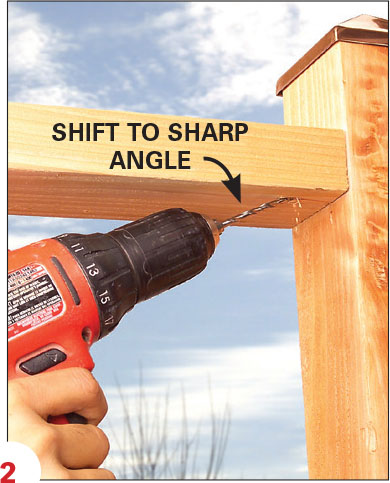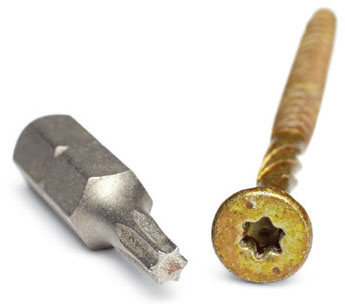
→ Style A screwdriver should have a comfortable nonslip handle and a crisply machined blade tip.
→ Size The blade should be the same width as the screwhead and should fit the slot snugly. If too large, the blade may not fit the slot and can damage surrounding surface; if too small, the blade may slip and damage the slot.
→ Drill before you drive In most cases, you can drive construction screws without drilling a hole. If you are having trouble, use an awl to make a pilot hole in wood. For larger screws and masonry, grab a drill bit that’s slightly smaller than the diameter of the screw. You’ll also avoid splitting the wood as the screw sinks in.
→ Choose better screws Phillips-head screws are a lot easier to drive than screws with a single slot. But when it comes to avoiding cam-out, some are even better—“square-drive” screws, and Torx. Avoid traditional wood screws; they simply don’t penetrate wood as easily as modern “construction” screws that have sharper tips.
→ Push hard, really hard Pressure is the best prevention for cam-out. With enough pressure behind it, the blade simply can’t slip out of the screwhead’s slot.
→ For speed A small electric screwdriver speeds many tasks, especially appliance and electronics repairs. Use a larger model or a drill equipped with screwdriver bit for heavy jobs.
→ Drive screws at an angle “Toe screwing” takes some practice. It allows you to make connections you otherwise couldn’t and to hide screws under boards where they won’t be seen (under a deck railing as shown here, for example). To make it easier, drill a pilot hole before driving. Or try it without a pilot hole, using this two-step technique.

1. Bore straight into the surface with a drill bit that’s slightly smaller than the screw you’ll use.

2. When you’ve drilled about 1/8 in. into the wood, keep the bit spinning while you shift the drill to a sharp angle.

 → Standard blade
→ Standard blade
 → Phillips blade
→ Phillips blade
 → Square-drive
→ Square-drive
 → Torx blade
→ Torx blade